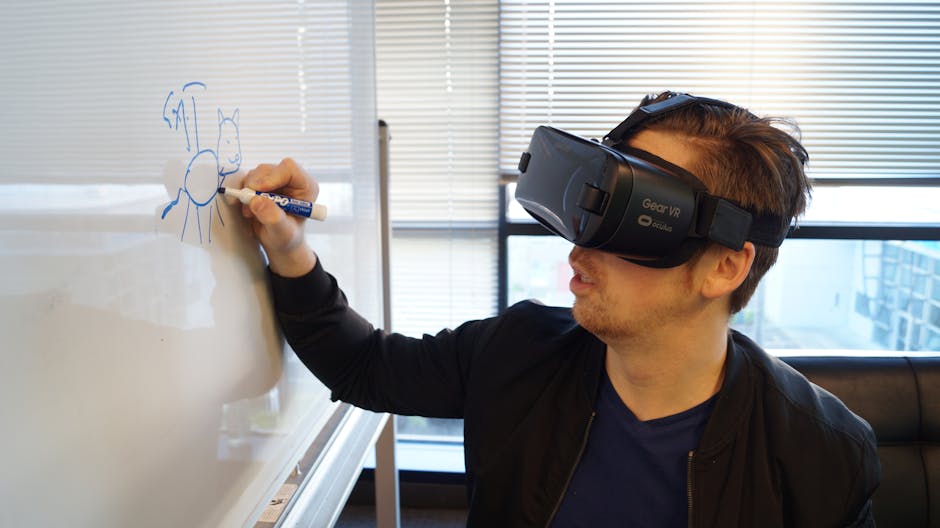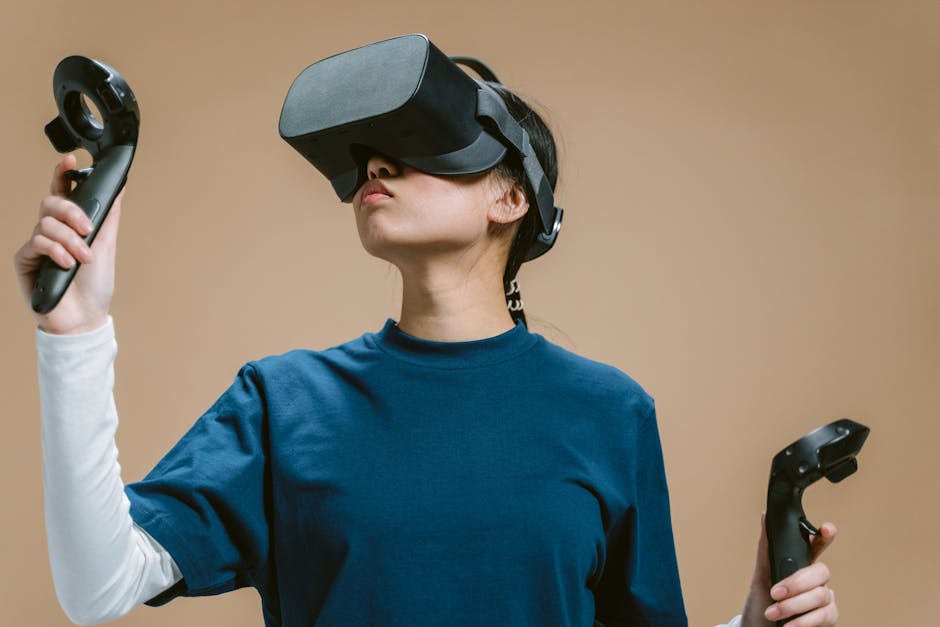Virtual Reality Spaces for Empathy Training: Develop Compassionate Learners Today
In the rapidly evolving landscape of education, harnessing technology to foster empathy has become increasingly critical. With the advent of immersive experiences like Virtual Reality (VR), educators now have an unprecedented opportunity to train learners in compassion and understanding. Unlike traditional online environments, VR permits students to step into someone else's shoes—literally. Imagine a classroom where learners experience life from the perspective of others, cultivating emotional intelligence and fostering a more compassionate society. This article explores the innovative use of VR for empathy training, unpacking its benefits, practical applications, and future prospects in online education.
Understanding Empathy in Education

Before we delve deeper into the realm of VR, it's essential to grasp what empathy truly means in an educational context. Empathy is the ability to understand and share the feelings of others, and its significance extends beyond the classroom. Research shows that empathetic learners can better engage with diverse perspectives, leading to enhanced collaborative skills and deeper social connections.
However, teaching empathy has traditionally posed a challenge for educators. Traditional methods often rely on passive forms of learning, like lectures or readings. While these can introduce concepts, they rarely enable students to experience those concepts viscerally. Online courses often lack interactive elements that could bridge this gap, which is where VR steps in.
The Rise of Virtual Reality in Learning

According to a 2021 report by the World Economic Forum, over 70% of educators believe that VR will play a substantial role in education by 2030. VR technology provides immersive experiences that engage users in a way that traditional learning methods cannot. With tools like VR headsets and platforms designed specifically for educational content, learners can now explore simulations that are both engaging and educational.
VR can transform how empathy lessons are taught, enabling students to experience diverse life situations through thought-provoking scenarios. For instance, a student might simulate being a refugee navigating through complex challenges, or they might engage in role-playing as someone experiencing various forms of discrimination. By placing learners in such immersive experiences, empathy becomes more than a concept; it transforms into a lived reality that can spark change.
Implementing VR Empathy Training in Online Courses

To implement VR for empathy training effectively, educators must consider how to integrate it into their existing curricula. Here are several ways VR can be used in online courses:
Creating Immersive Scenarios

One of the most effective ways to use VR in empathy training is through realistic simulations. For example, scenarios depicting various social issues—such as poverty, disability, or cultural differences—can offer insights into the challenges faced by others. The goal is to create a space where students can explore these issues from within, facilitating a deeper understanding that passive learning can’t achieve.
Collaborating with Developers

Partnering with VR developers can help educators access resources and tools to create custom empathy training modules. Collaborations can lead to content tailored to specific learning outcomes, enhancing the overall educational experience. Platforms like Oculus for Business or VRFocus offer resources and assistance for educators looking to implement VR technology effectively.
Building Reflective Practices

After VR experiences, incorporating reflective practices can amplify the learning impact. Educators can prompt students to share their feelings and insights regarding their experiences. This can be implemented through discussions, journals, or even creative projects, culminating in a deeper understanding of empathy's role in our lives.
Utilizing Mixed Reality

Incorporating Mixed Reality (MR), which blends real-world interactions with virtual experiences, can deepen understanding even further. This approach allows learners to interact with their physical environment while engaging with VR content, thereby enhancing realism and relatability. Such technology has the potential to reshape how empathy is cultivated in digital classrooms.
The Benefits of VR Empathy Training

Investing in VR empathy training offers several transformative benefits for both educators and learners:
Enhanced Emotional Intelligence

As learners immerse themselves in the experiences of others, they can cultivate strong emotional intelligence. This fosters skills like self-awareness, self-regulation, and interpersonal skills, vital in an increasingly interconnected world.
Improved Engagement

VR training captivates learners' interests more effectively than traditional methods. The excitement surrounding VR technology can spark a genuine interest in learning more about social issues and compassion.
Bridging Cultural Divides

By presenting learners with diverse perspectives through VR scenarios, these immersive experiences can break down pre-existing biases and promote a greater understanding of global cultures. This can lead to a more inclusive classroom, one that values diversity and encourages empathy toward others.
Preparing Future Leaders

Empathetic leaders possess qualities essential for success in today's workplaces. By cultivating empathy in learners, educators contribute to developing compassionate future leaders who understand the importance of emotional intelligence, both in personal and professional settings.
Supporting Mental Health Awareness

As learners explore various life situations, they can gain insights into mental health challenges faced by individuals today. By engaging with these scenarios, students become more aware of the complexities surrounding mental health issues, equipping them with knowledge they can apply in their future interactions.
Challenges and Considerations

While the benefits are compelling, implementing VR in online courses comes with its own set of challenges that educators should keep in mind:
Accessibility

Not all learners have equal access to VR technology. It is crucial to ensure that any VR experience is inclusive and that alternative training methods are available to accommodate those who cannot access the technology.
Technological Learning Curve
Both educators and learners may face hurdles in adapting to new technology. Training on how to use VR tools and platforms effectively is essential to maximize the potential of VR immersion.
Maintaining Focus on Empathy
There is a risk that educators may rely too heavily on VR technology without emphasizing the underlying goal: fostering empathy. It’s essential to maintain a balanced approach, ensuring that VR sessions are tied to broader learning objectives and discussions.
Designing Realistic Scenarios
Creating effective simulations can be a complex task. Collaborating with professionals who specialize in VR content development can help educators design more effective and empowering training experiences.
The Future of VR in Online Education
The use of VR for empathy training is just one facet of a broader movement toward leveraging technology in education. With advancements in AI, Mixed Reality, and gamification, the possibilities for enhancing online learning through immersive experiences are virtually limitless.
Research indicates that emotional intelligence will be among the top skills demanded in the workforce by 2025. Educators who proactively embrace VR for empathy training will not only enrich the learning experience but also prepare students for the social demands of their future careers as empathetic leaders.
To explore more innovative ways technology can enhance your teaching methods, consider checking out additional resources from our blog on topics such as sensory learning environments or digital storytelling.
Final Thoughts
The incorporation of Virtual Reality into empathy training signifies a powerful shift in how we prepare learners for the complexities of the human experience. By embracing immersive technologies, educators can create engaging, impactful, and transformative learning environments. As we look ahead to 2025 and beyond, it’s clear that the future of education lies in crafting experiences that foster understanding and compassion. Let’s work together to cultivate a more empathetic generation, one immersive experience at a time.

